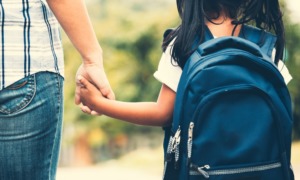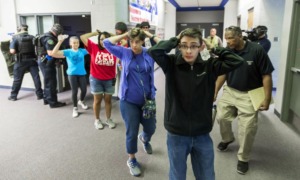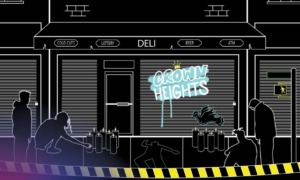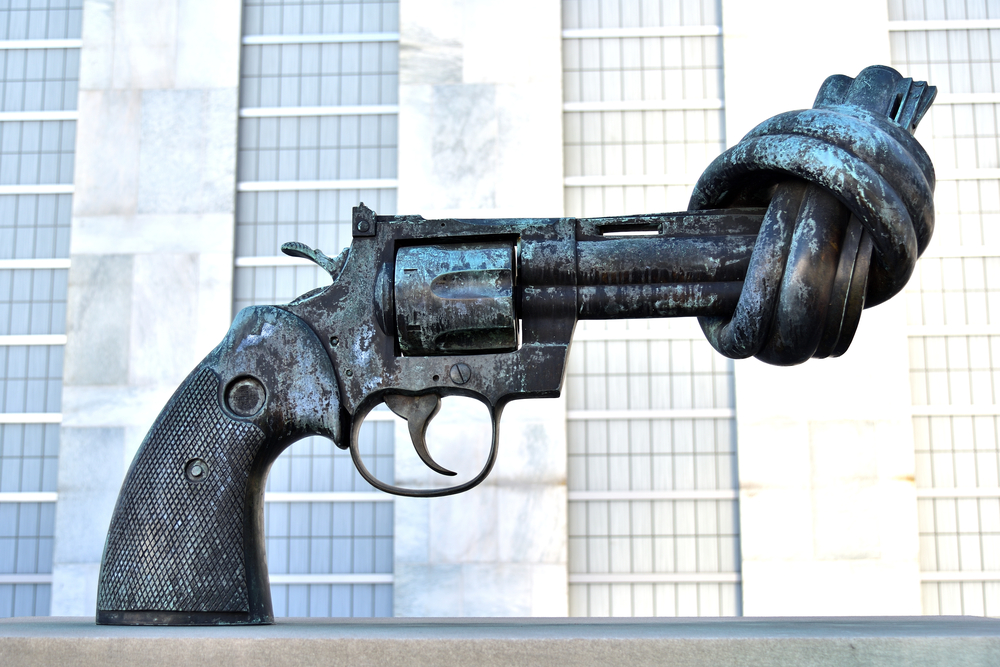
Lee Nanjoo/Shutterstock
.
We have so much work to do. So many lives to be saved. How is it that in the United States of America in 2019 a common thought — as one leaves their home to shop or to watch a movie, or to go out and enjoy a meal — is whether or not this will be the day or night that they or someone they love gets caught in the crossfire? Where are the exits or hiding places if something goes down? Why are we having to be so alert, so watchful? Could you be next? Crazy thoughts. In America? Wow!
On April 18, 1999, my oldest child was born. What an exhilarating life-changing event for me and my wife — for our family. Two days later as my wife and child were recovering in the hospital, we turn on the news to learn of a massacre being played out at Columbine High School in Columbine, Colo. I recall my thoughts of horror and sorrow. A deep-seated fear and sadness poured over my spirit as I, a new parent, couldn’t possibly fathom what the parents of Columbine were experiencing and feeling.
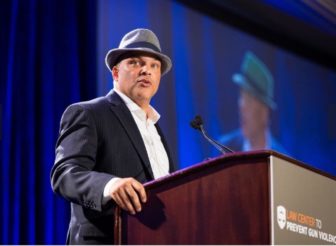
DeVone Boggan
This was a defining moment for me as a new parent, as an American citizen. I understood the magnitude; I knew then that I would always remember where I was when Columbine went down. According to the Washington Post, since 1966, 1,077 individuals have been fatally shot and wounded as a result of mass shootings in which more than four people perished; children and teenagers compose about a 10th of these fatalities. Since Columbine in 1999, more than 50 mass shootings have occurred in America, killing more than 530 people and injuring several others. How is this country responding to gun violence? I’d say poorly, dreadfully bad.
During the heightened period shortly after Columbine, I was listening to a program on National Public Radio where a young African American high school-aged girl from Chicago was being interviewed about what had happened at Columbine. What caught my attention was her direct question and her statement: “Why is so much attention being given to this event?” Yes, it is unfortunate, even sad, but this happens in my community every day, she said. There are mass shootings collectively around this country every day impacting people, young people who look like me, and never has the kind of attention given to what has happened in Columbine ever been given in mine.
For me, hearing this had sort of a paralyzing effect on me. I sat in thought for a time, saddened by all of this reality swirling around me. Remember, I was in a state of dreaminess; we had just brought our baby girl into this world, a world full of opportunity — America! This was supposed to be the happiest time in my life. But the reality was penetrating. So much work to be done.
Sick and tired
I knew there was a lot of truth to what this young girl from Chicago was saying. However, what I didn’t understand or know at that time was the magnitude of that reality she spoke of in black and brown neighborhoods in America.
In 1999 you could not have told me that my future career path would take me down a road where working to end gun violence would consume me. Eight years after Columbine in late 2007, I would find myself serving as neighborhood safety director in what was at the time the sixth most dangerous city in America. Richmond, Calif., had earned that ominous distinction due to its historically high levels of cyclical and retaliatory interpersonal gun violence (47 homicides per 100,000), where the state average was 6.9 per 100,000.
As neighborhood safety director, my charge was to reduce firearm assaults and associated injury and death. Residents had grown weary and had come to a place where most had become sick and tired of being sick and tired of its gun violence problem and the devastation and trauma left in its path. A first-of-its-kind department within city government, the Office of Neighborhood Safety was deliberately and intentionally created to help stop gun violence, and I was tapped to serve as its founding director. It was during my eight-year tenure in this role where I would learn and gain greater clarity around the truths in the 1999 statements by the Chicago student.
What did I learn? That in America, each year on average there are 14,000-plus people murdered by a firearm due to interpersonal violence (4.43 per 100,000). Half or more of these occur in black and brown communities, mostly impacting young men of color under 30. Taking this into account, since Columbine we can conservatively estimate that more than 100,000 young men of color have been murdered by a firearm in the U.S. Giffords Law Center to Prevent Gun Violence reports that nearly 115,000 people in the United States are shot annually and the corresponding criminal justice and health care costs total an estimated $229 billion.
Underserved neighborhoods bear the brunt of this epidemic: Black men make up 6% of the nation’s population, but account for more than half of gun violence victims each year. For example, of America’s 13,000-plus gun-related homicide victims in 2015, over 8,500 were men of color.
A shameful public health crisis
This is clearly an epidemic of greater proportion, a public health crisis, and it doesn’t come close to getting the attention of mass shootings nor does stopping it generate that level of resources. Our failure as a so-called civilized nation to adequately address the gun violence reality happening in black and brown communities will keep us as a country from ever truly healing ourselves completely of this horrendous gun violence disease.
Note this: Forty-eight hours from when you read this, more than 200 lives will be lost in America to gun violence. This is happening right now, under our noses. Aren’t we better than this narrative? The data would say that we are not, definitely not. This is shameful, unacceptable. In America this is criminal. But it’s who we are, yes, it’s who we are and we must come to grips with this truth as a country. We must acknowledge it. Only then can we have a healthy reset, move the country forward, save lives and truly be free — Live!
Nelson Mandela reminds us that when confronting a seemingly intractable challenge that “it always seems impossible until it’s done.” Coming from his experience, it gives me great hope that the reckoning and healing required within this uniquely American experience is indeed possible. I am one who believes, based on extensive close-to-the-ground experience in this space, that we can and must successfully and significantly achieve sustained reductions in gun violence in urban neighborhoods where it is most prevalent.
Jim Collins, in his No.1 best seller “Good to Great,” notes that “Greatness is not a function of circumstance. Greatness, as it turns out is largely a matter of conscious choice, and discipline.”
In the city of Richmond, Calif., as a community we made a choice to stop gun violence. We got very focused and disciplined in our collective efforts to stop gun violence. We’ve committed to achieving greatness in this area, by conscious choice and discipline. And we continue to work at it. During my tenure as neighborhood safety director between 2007 and 2016, gun violence fell by 73%. These reductions have been sustained and continue to fall. By decisiveness. By discipline.
I remember early on when many would say to me, “What you’re believing for, what you’re working for, is impossible.” It may have felt that way early on, but you ask anyone in Richmond today, and they will tell you anything is possible. The choices we make can be unfocused or powerful, oversold or indispensable, recreational or transformational. We get to decide. As a country we must get to a place where we are sick and tired of being sick and tired of gun violence, and then we must decide to end it!
DeVone Boggan is the former neighborhood safety director and director of the Office of Neighborhood Safety for Richmond, Calif. He is now chief executive officer of Advance Peace, which interrupts cyclical and retaliatory gun violence in U.S. urban neighborhoods by providing transformational opportunities to those at the center of firearm hostilities through its Peacemaker Fellowship®.


